Industry Insights
The State of Learning 2020
Jordack is happy to bring you our State of Learning 2020 Review. The learning and development industry has the opportunity to help teams strengthen their skills and create a culture of learning. The data below is pulled together from industry-leading reporting agencies, including almost 7,000 L&D professionals from 18 countries. The article will review the top L&D focus areas for 2020, the most significant challenges, and the importance of upskilling and reskilling. Budgets continue to shift from ILT to online learning in 2020, helping L&D scale learning globally.
Some say that the way we spend our time defines who we are. The same is true for talent developers. Based on survey results, they wear many hats with building and sourcing content being the biggest percentage of their time. The rest of their activities are a mix of both strategic and tactical activities—from creating learning content to working with managers and executives. By having large libraries of content to help quickly curate and personalize learning recommendations, we expect that the time spent building and sourcing content will go down over time.

According to the 2019 PWC CEO Survey, “79% percent of CEOs worldwide are concerned that a lack of essential skills in their workforce is threatening the future growth of their organization. This compares
to just 63% in 2014—confirming that concern over skills has risen in line with the advent of new technologies over the past five years.”

Given that enterprises are generally more impacted by global economic shifts, digital transformation, and automation, it makes sense that executives at these larger companies understand and value the impact of learning. And, L&D leaders are leveraging these decision makers to champion learning in new and exciting ways. These executives in particular believe that closing skills gaps is an urgent business priority. Although the numbers are not as big, it’s encouraging that companies of all sizes are leveraging their executives to cultivate a culture of learning.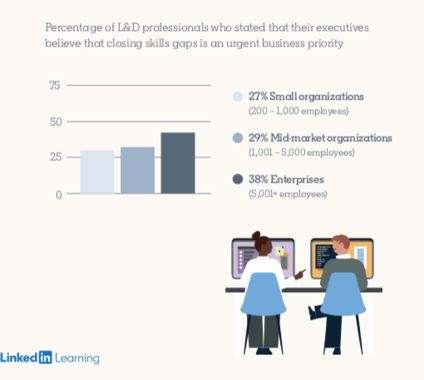
To encourage learning across the organization, senior executives in enterprise companies are more likely to create mandatory learning.
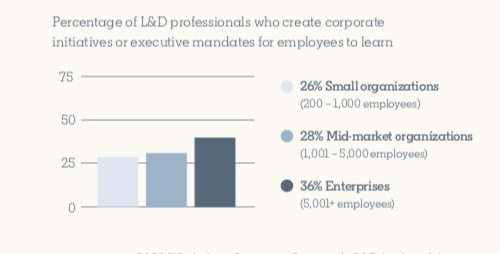
Measuring the impact of learning is the top focus area for L&D in 2020
When we asked L&D professionals globally what their most important area of strategic focus was for 2020, evaluating the effectiveness of learning programs topped the list. This is an interesting shift, given that the top strategic focus area of 2019 was to identify and assess skills gaps (which fell to the fourth spot this year.) Given that the top six focus areas had a distribution of only 10 percentage points, it means that talent developers have a lot of priorities that are both urgent and important.

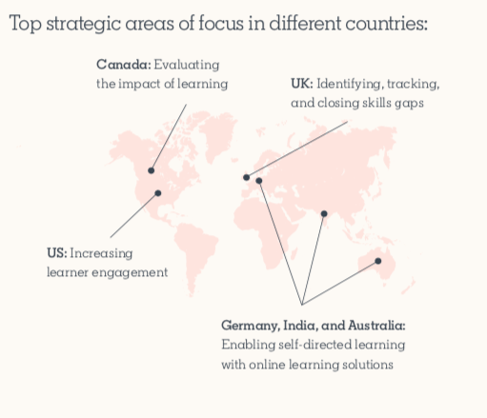
Driving higher learner engagement is a consistent challenge for all talent developers, but—as with measuring impact— the industry has yet to converge on a true north metric for engagement. Surprisingly, nearly a quarter of L&D pros globally don’t measure learner engagement. This underscores what we already know: measuring learner engagement is a hard nut to crack.
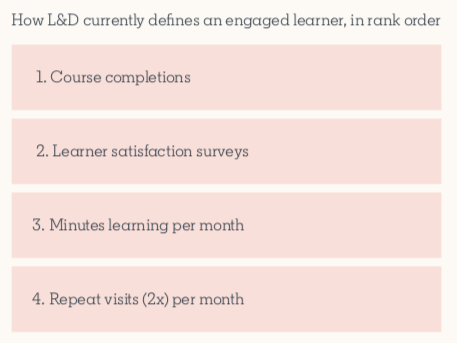
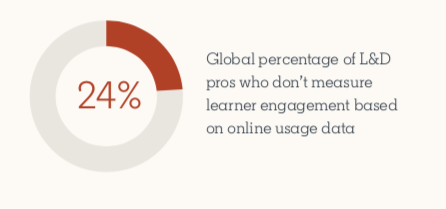
Because the industry has yet to converge on a true north engagement metric, here are 3 questions to get you thinking about what measure would work best for your organization.
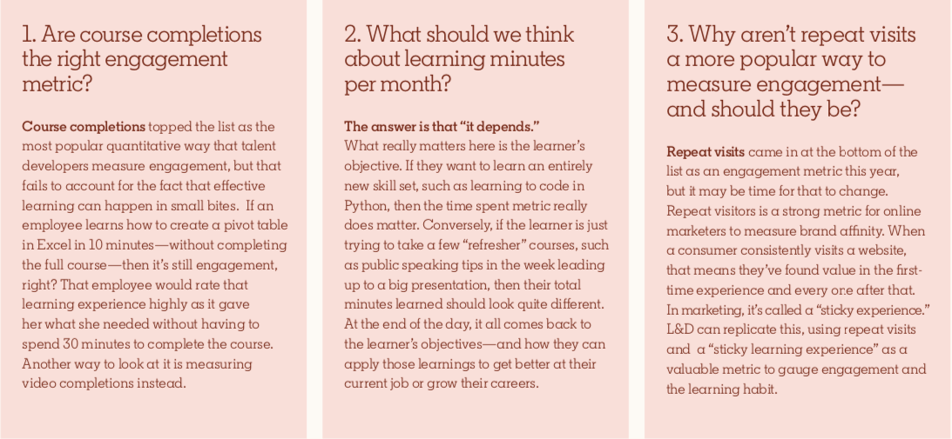
L&D’s 3 biggest challenges this year.
We asked talent developers globally what their top three challenges are this year and here’s what they said:
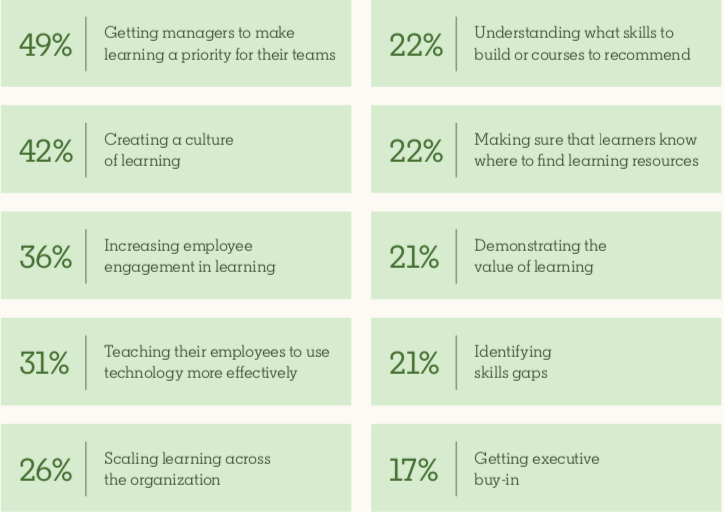
Employees want highly relevant learning experiences.
Unsurprisingly, the top factor that prevents employees from learning is that they don’t have time to learn at work, but nearly all learners do see the career benefits of carving out time to learn. It’s also important to note that most learning happens during the week, according to LinkedIn Learning platform data.
Given that time is of the essence, learners are craving a highly personalized learning experience that serves up the right learning at the right time, without having to dig for it. Learners across all generations also want to learn with their colleagues to exchange ideas, share insights, and ask questions.
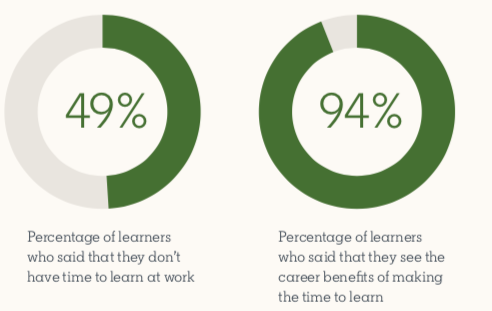
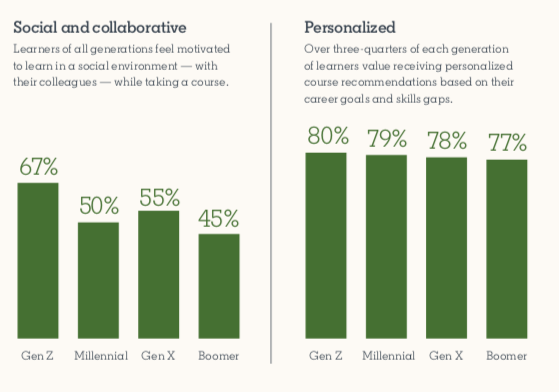

The era of upskilling and reskilling has arrived.
L&D pros are taking the long view when it comes to helping their workforce develop new skills. All talent developers want to help strengthen the skills that employees already have, but the rapid pace of business and technology changes is putting upskilling and reskilling front and center. Surprisingly, nearly half of them plan on reskilling a portion of their workforce this year indicating the L&D pros are strategically looking ahead to prepare their organizations for what’s ahead. To that point, the #1 piece of information that L&D pros want to help them identify skills gaps is data on what skills will be most in-demand in the next 3-5 years. As the pace of technology advancement accelerates, the era of upskilling and reskilling is upon us
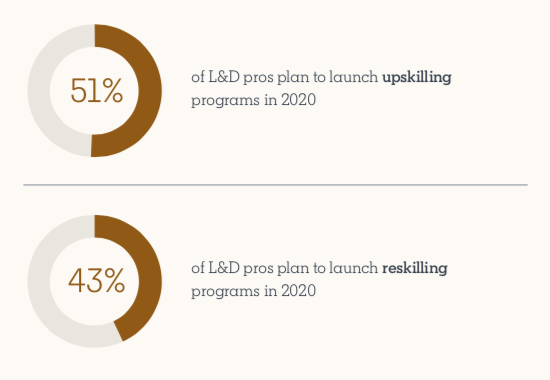
This year, talent developers are laser focused on building soft skills— interpersonal skills that are foundational to every employee’s success, regardless of their functional role or how the technology landscape evolves. This is a smart investment, given that the shelf life of technical skills is relatively short—less than 5 years—while strong leadership, creative, and communication skills are always in demand.
